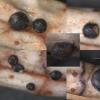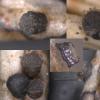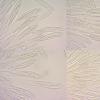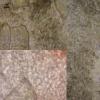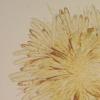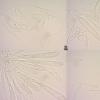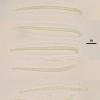
20-12-2025 23:08
Patrice TANCHAUDBonsoir, récolte sur sol sablonneux dans l'arri�

21-12-2025 09:32
Hello.A tiny ascomycete found embedded in wood in

20-12-2025 15:47
Mirek GrycHi.These grew on pine wood that was heavily covere

18-12-2025 21:17
Pol DebaenstThe identification took me to Byssonectria deformi

15-12-2025 07:09
 Danny Newman
Danny Newman
indet. Rutstroemiaceae sp. on unk. fallen leavesMc

19-12-2025 10:10
Patrice TANCHAUDBonjour, récolte réalisée en milieu dunaire, a

18-12-2025 17:23
 Bruno Coué
Bruno Coué
Bonjour,je serais heureux d'avoir votre avis sur c

18-12-2025 18:07
Margot en Geert VullingsThese plumes were found on rotten wood.They strong
I have mentioned earlier this species, but now it is with vital description. It fits well with description in Sherwood (1980,Taxonomic studies in the Phacidiales: the genus Coccomyces (Rhytismataceae).
It is described in this publication based on collection from Magadan Region (Far East, Russia), and reported there to be the species with unknown describution. Probably since the time of the work there were another registrations (?).
It was most common species in my quantitative study of Andromeda leaves fungal community (West Siberia). Its fruiting is in autumn (before middle-september there were under-developed black spots - well distinguished immature structures).
Hysterothecia pustulate when young, then hymenium exposes with teeth and overall shape becoming turbinate, outer surface blackish, hymenium gray, 550–900 mk broad, up to 500 mk high; scattered at both leaf surfaces.
Asci 180–238 (n=5) long, 15–18.5 (n=18) broad in upper part, with long stalk, tip with protruding wart, J negative; paraphyses filiform, some larger at base (2.4 mk), 1.2 at upper part, where strongly circinate; spores filiform, slightly tapering below, with two clear gelatinous appendages (hemicircular at upper part and attenuated below), with strong sheath, some tiny oils inside, 60 (54–65) x 3 (2.7–3.3) (with sheath about 13 mk broad) (n=24, length measured without gelatinous appendages).?

Zotto


